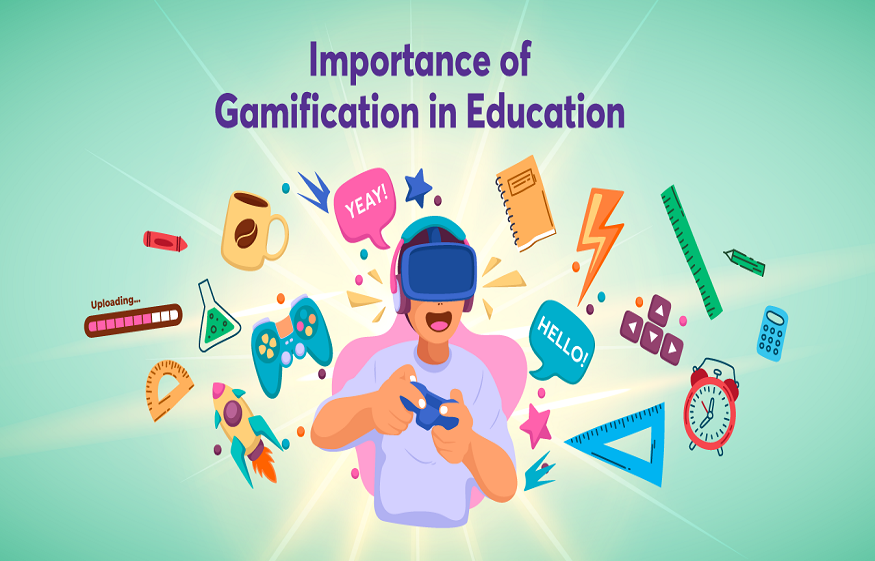Are you tired of the traditional, monotonous methods of education? Do you believe that learning should be enjoyable and thrilling for students? Well, get ready to delve into the exciting world of gamifying education! In this blog post, we will explore the mechanics behind successful teaching platforms that have revolutionised the way we learn. Get ready to unlock secrets to engaging classroom experiences, motivating students like never before, and ultimately transforming education as we know it. So put on your gaming glasses and let’s embark on a thrilling journey towards creating an educational experience that is both effective and fun!
Introduction to Gamification Platforms
As the use of digital technology in the classroom continues to grow, so does the need for innovative ways to engage students in learning. Gamification platforms offer a unique solution to this problem by incorporating elements of game design into educational content and activities.
Gamification platforms can take many different forms, but all share the common goal of using game-based mechanics to motivate and engage learners. Some popular gamification platforms include Quizlet, Classcraft, and Kahoot!.
Quizlet is a flashcard-based learning platform that allows students to create their own study decks or use pre-made decks created by other users. Quizlet also offers a variety of games and quizzes that students can use to test their knowledge.
Classcraft is a role-playing game that puts students in charge of their own adventure. As they progress through the game, players must make choices that affect the outcome of the story. Classcraft also includes opportunities for collaboration and competition among players.
Kahoot! is a quiz-based platform that allows users to create their own quizzes or use pre-made quizzes created by others. Kahoot! also offers a variety of customization options, including the ability to add images and videos to quizzes.
Benefits of a Gamification Platform
When it comes to educational technology, gamification platforms are one of the most popular and successful teaching tools available. Gamification platforms use game-based mechanics to engage students and encourage them to learn. By providing rewards, points, and leaderboards, students are motivated to keep learning and progressing.
Gamification platforms have been shown to improve student engagement, motivation, and performance. In one study, students who used a gamified platform were more engaged in their learning and performed better on assessments than those who did not use a gamified platform.
There are many benefits of using a gamification platform in the classroom. Gamification can help students learn content more effectively, retain information longer, and be more engaged in their learning. In addition, gamification can promote collaboration among students and between students and teachers.
How Does a Gamification Platform Work?
A gamification platform works by incorporating game-based mechanics into an educational setting in order to engage and motivate learners. By doing so, it is said to promote higher levels of participation and achievement.
There are a number of different ways in which a gamification platform can work. For example, it can use points, badges, and leaderboards to encourage students to stay on task and complete assignments. It can also provide rewards for progress made or goals met. In some cases, it may even allow students to compete against each other in order to add an element of fun and friendly competition.
Ultimately, the goal of a gamification platform is to make learning more enjoyable and engaging for students so that they are more likely to stick with it and see better results. While there is still much research to be done on gamification and its effects on education, early indications are promising and suggest that it could be a valuable tool for teachers and students alike.
Types of Gamification Platforms
There are a few different types of gamification platforms available to educators. Some popular ones include Classcraft, Gamify, and GameSalad.
Classcraft is a great option for educators who want to gamify their classrooms. It allows teachers to create custom game worlds for their students to explore and play in. There are also a variety of pre-made games and activities that teachers can assign to their students.
Gamify is another popular platform that helps educators gamify their classrooms. It provides a variety of tools and features that teachers can use to engage their students in learning. For example, teachers can create leaderboards and badges to motivate students to achieve more.
GameSalad is a great option for those who want to create their own gamified experiences. It is a very user-friendly platform that makes it easy for anyone to create games and activities. GameSalad also offers a wide range of templates and assets that users can utilise to create their own unique games.
Examples of Successful Teaching Platforms
There are many different types of successful teaching platforms. Some use a traditional classroom setting, while others use online or distance learning tools. Some platforms focus on one specific subject, while others provide a more holistic approach to education.
One example of a successful teaching platform is the Khan Academy. The Khan Academy provides a comprehensive and engaging education experience for students of all ages. The platform offers a variety of educational resources, including video lessons, practice exercises, and assessment tools.
Another example of a successful teaching platform is Codecademy. Codecademy focuses on helping its users learn how to code. The platform offers interactive exercises, articles, and projects that allow users to learn at their own pace.
Other examples of successful teaching platforms include edX, Coursera, and Udacity. These platforms offer courses from top universities and colleges around the world. They provide users with access to high-quality education resources that can help them further their careers or pursue new interests.
Key Considerations When Choosing a Gamification Platform for Your Classroom
There are a number of key considerations to take into account when choosing a gamification platform for your classroom. Below we explore some of the most important factors to keep in mind:
- Ease of use: The platform should be easy for both teachers and students to use. It should have an intuitive interface and clear instructions on how to play the games.
- Engaging games: The games should be engaging and enjoyable for students of all ages. They should also be educational, teaching students important skills and knowledge in an entertaining way.
- Flexibility: The platform should be flexible, allowing teachers to customise it to fit their own unique classroom needs. It should also be compatible with different types of technology, such as laptops, tablets, and smartphones.
- Safety and security: The platform must be safe and secure for all users, with features such as data encryption and user authentication to protect sensitive information.
- Affordable price: The platform should be affordable for schools and individual teachers alike. There should be a variety of pricing options available to fit different budgets.
Challenges of Using Gamification in Education
There are several challenges that come with using gamification in education. The first is that it can be difficult to incorporate into existing curriculum. Teachers may need to change the way they present material in order to make it more game-like, which can be time-consuming. Additionally, some students may not be motivated by games and could end up feeling disengaged from the learning process. There is a risk of creating an addictive environment where students are more focused on playing the game than on learning the material.
Conclusion
Overall, the gamification of education has proven to be a successful strategy for engaging and motivating students. By leveraging game-based mechanics such as rewards, challenges, and collaboration, teaching platforms have been able to create an immersive learning experience that encourages exploration and creativity. With more educators embracing this approach to learning, there’s no doubt that gamified education will continue to shape the future of educational technology.



